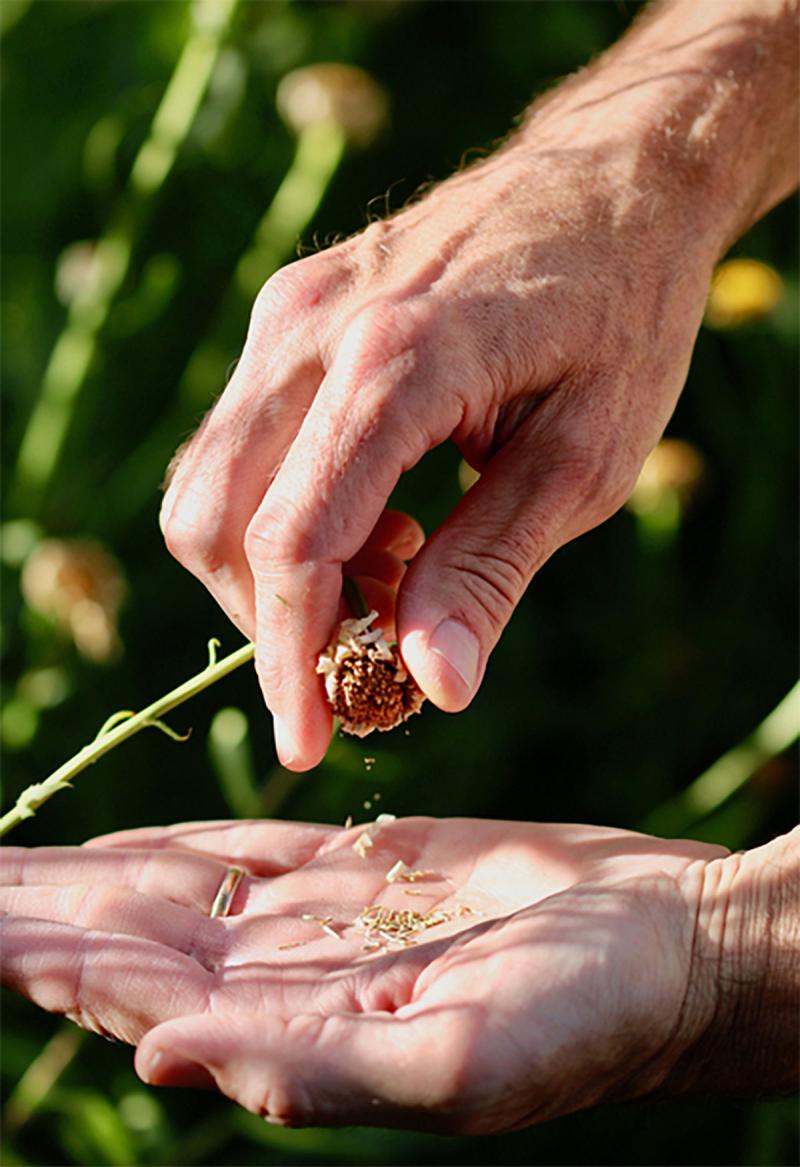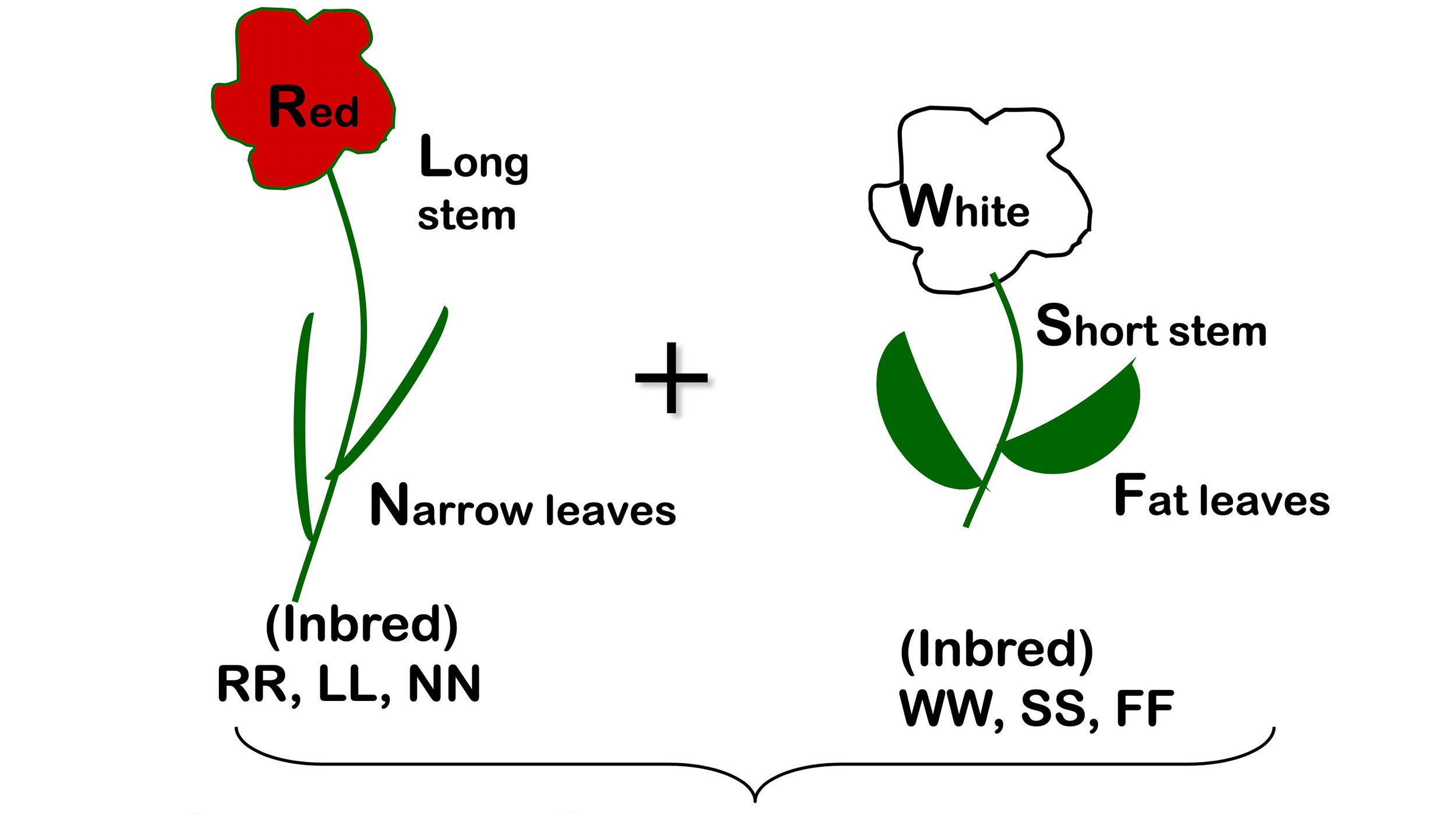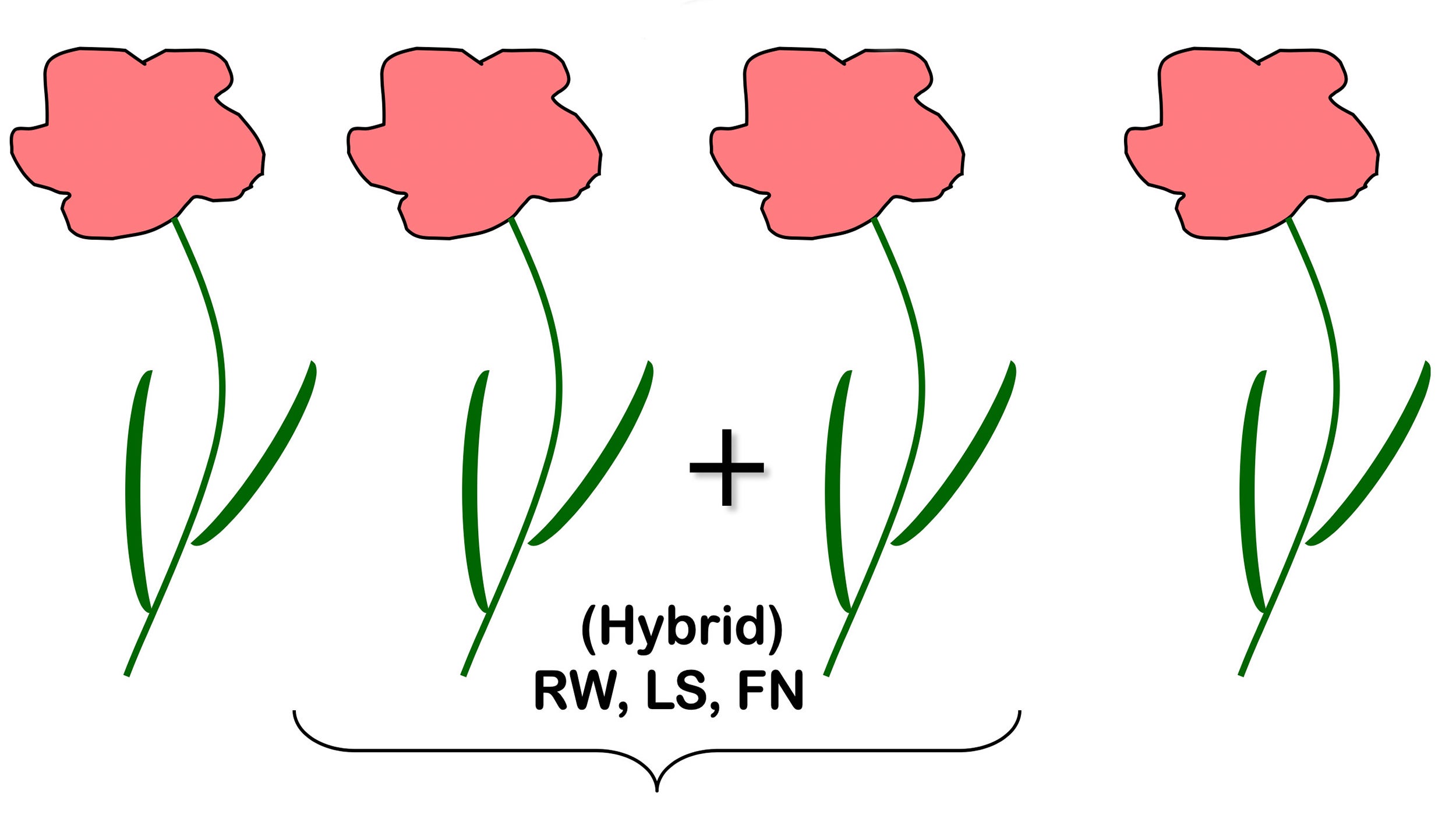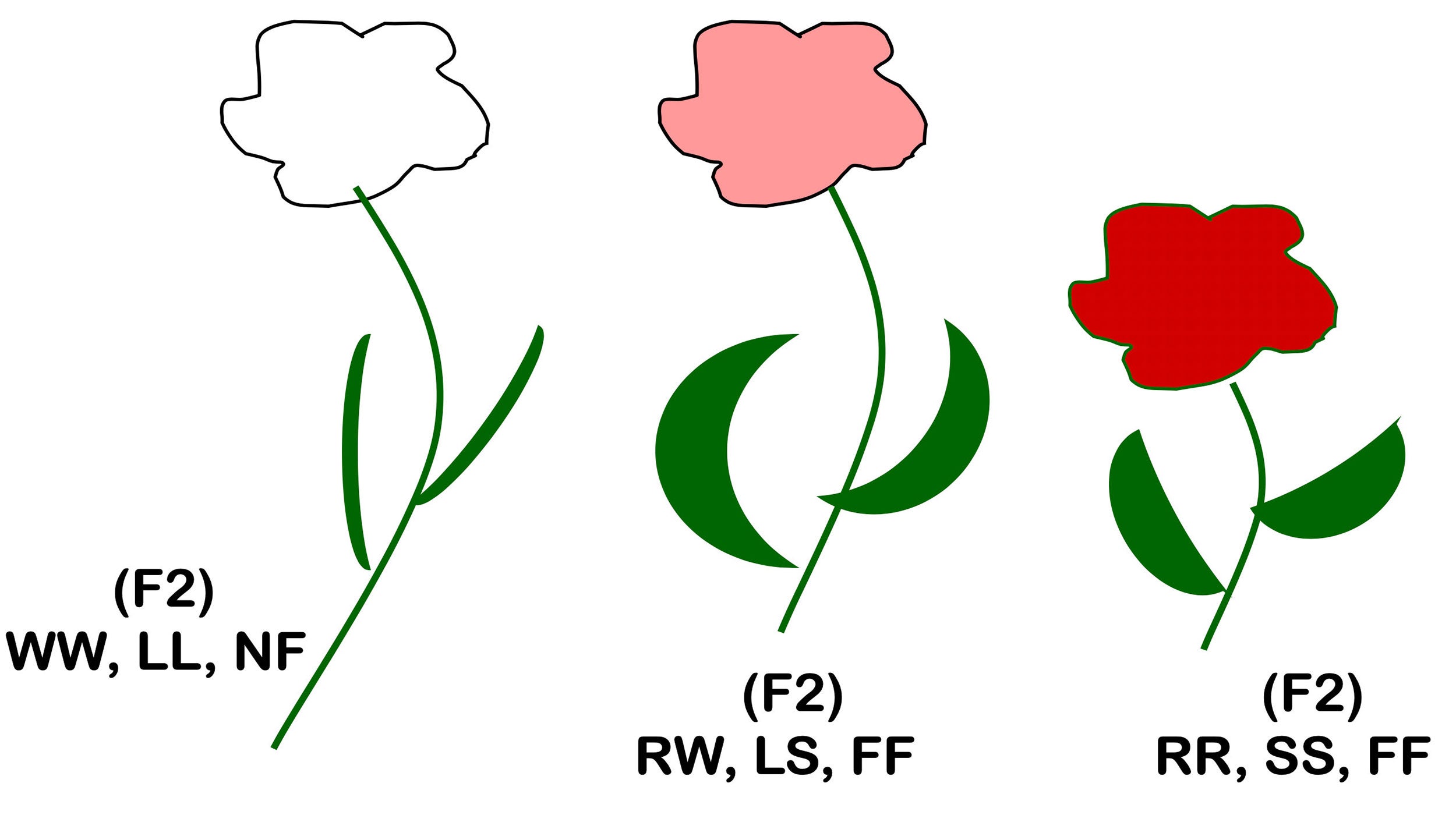Written by Rhoda Burrows, former Professor & SDSU Extension Horticulture Specialist.
It can be very rewarding to harvest and save seed of ornamental and vegetable plants. But why is it that sometimes when we plant the seed we saved, the results do not seem to be very like the plant we collected the seed from?
To answer that question, it helps to know a little more about both the plant we collected the seed from, as well as the likely source of the pollen that fertilized the flower to form the seed.
Seed Sources
When a seed is formed by a plant, it is the result of pollen fertilizing an egg (ovule). Whether the resulting seed “comes true,” that is, produces plants identical to the plant that it was harvested from, depends on whether it is outcrossed, inbred, or hybrid. These three options determine whether the two sets of genes (one from the pollen and one from the ovule) are likely to be identical or very different.

+ Inbred
In inbred plants, the eggs are fertilized with pollen from the same plant. (Another term for this that you may have heard is self-pollination). The progeny will each have two identical (or nearly so) sets of genes, exact copies of their parents, and very similar to each other. Most peas and beans are inbred. Since seed from self-pollinated plants will produce plants very like the plant it was produced on, these kinds of plants are ideal for seed saving.
✗ Outcrossed
Outcrossed plants require pollen from a different plant to fertilize the egg (also called cross-pollination). Some outcrossing species have the female and male parts in separate flowers (corn or squash) or even separate plants (asparagus). Others have both parts in the same flower, but the egg will accept pollen only from another flower or plant. Apples are an example of this – that is why a separate pollinator tree is needed to obtain fruit. The two sets of genes in the offspring of outcrossed plants tend to have a lot of variation, so that the outcome of crossing is less predictable, somewhat like the variation between siblings in a human family. Seed from outcrossed plants will not necessarily come true; thus you should not save seed from these plants if you want to be certain that the plants will be exactly the same as their parents. However, if you have grown only one variety (and your neighbors have grown the same variety or are far enough away to avoid wind- or insect- cross pollination), you can still expect fairly consistent results from that seed.
✗ Hybrids
Hybrids result from crossing two different inbred lines. All of the first generation of plants from this cross will contain the exact same two sets of genes (one from each line) and thus will be identical to each other. This first generation is what you buy in a seed packet marked “Hybrid” or “F1”. However, the next generation (the plants that will grow from seed produced from plants grown from “F1” seed) will contain a random mixture of genes, resulting in plants that may have a whole range of desirable and undesirable characteristics. Thus you should not save seed from F1 or hybrid plants if you want to be certain that the plants grown from that seed will be the same as their parents.
Plant Types
How can you tell whether a plant is outcrossed, inbred, or hybrid? First of all, look for the words “hybrid” or “F1” on seed packets. Any plant that has separate male and female flowers is most likely outbred. Plants with closed flowers, such as peas and beans, are usually inbred. Sometimes it will not be obvious whether the plant is inbred or outbred. Following is a list of plants that either mostly outcrossed or inbred.
Outcrossed
- Beets
- Broccoli
- Cabbage
- Carrots
- Corn
- Cucumbers
- Melons
- Onions
- Radish
- Spinach
- Squash
- Turnips
- Pumpkins
- Most annual flowers
Inbred (self-pollinted)
- Beans
- Lettuce
- Eggplant
- Peas
- Peppers
- Tomatoes
- Clarkia
- Lupine
- Double-flowered asters
- Snapdragon
- Stock
- Sweetpea
Hybrids
Hybrids are a seed savers’ bane. Plants that grow from seed saved from hybrid plants generally are less vigorous, more variable, and usually have smaller blossoms and yield less than their parents. Why?
Hybrid plants are the result of crossing plants from two different “pure lines,” that have been developed by inbreeding to have consistent characteristics from one generation to the next. Both sets of genes in a pure line plant are identical, or nearly so. Plant breeders experiment until they find the two lines of inbred parents that will result in the best progeny, for example, a cross that results in plants with the large flowers of one parent, and the disease resistance of the other parent.
When two different pure lines are crossed, the resulting progeny (known as “F1” or First generation) will inherit one set of genes from each parent. The resulting F1 offspring will be more or less identical, since they are all inheriting the exact same two sets of genes (one set from each of the inbred parents). These progeny usually display “hybrid vigor” – the reason that hybrid plants often have larger flowers or yield more. However, since it takes time and money to develop the pure lines, and to insure that the flowers of one line are pollinated only by the other line, hybrid seed is usually more expensive, and it may be illegal to save the seed from those plants.
Because F1 plants contain genes from two very different lines, their progeny (“F2” generation – or the “grandchildren” of the hybrid) will behave more like outcrossed plants, having a random assortment of the genes from either of the F1 parents – the desired ones along with the bad ones. Some plants may look like the F1 hybrids, but others may look and grow quite differently. Subsequent generations will have even more variability.
Breeding Example
1. Parent Plants

Let’s cross two plants with different flower color, leaf shape and stem length. These parent plants are inbred, so each plant has two identical sets of genes for each characteristic: (R=red or W=white flower; L=long or S=short stem; N=narrow or F=fat leaf)
2. Child Plants

All the resulting plants are identical, having pink flowers (resulting from the combination of R+W), medium stems (resulting from the combination of L+S) and narrow leaves (we’ll pretend that N is “dominant” over F). Each of these plants has one gene for each characteristic from each of the inbred parents, so they all have: RW, LS, FN
3. Crossed Child Plants

If any two of the child plants are crossed, almost anything can result, because each of these plants (known as F2) can pass on either a R or W gene, L or S, and F or N. So the progeny could be any of the following types: RRLLFF; RRLSFF; RRLSNN; RRLSNF; RRSSNF; RRSSNF; RWLLFF; RWLLFF; RWLSFF; RWLLFN; etcetera.


